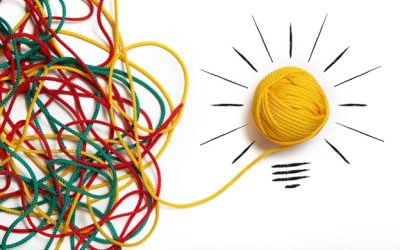Overview
Everyone knows the famous “Jack” and his love of climbing beanstalks – or do we? What if, in fact, Jack doesn’t like climbing at all? Elementary learners will create an alternative travel method for Jack, while learning how entrepreneurs solve problems and create products for specific customer needs.
NB Curricular Connections
English Language Arts
Strand: Reading – Big Idea: Reading Comprehension – Skill Descriptor: Construct meaning from oral stories, read-alouds, and text.
Mathematics
Strand: Shape and Space – Big Idea: Measurement
Personal Wellness
Strand: Career Connected Learning – Big Idea: Experiencing Potential Career Pathways – Skill Descriptors: Engage in frequent and ongoing career connected experiential learning to learn about preferred career pathways and develop personal competencies.
What You’ll Need
- PowerPoint Presentation – No More Beanstalks! (see PDF)
- Alternative Travel Planning Sheet – 1 per small group (see PDF)
- Book: It’s NOT Jack and the Beanstalk (by: Josh Funk)
- Pencils
- Scissors
- Tape
- Glue
- Assortment of recyclable materials: cardboard, plastic, etc.
- Assortment of consumables: paper plates, dixie cups, tissue paper, pipe cleaners, etc.
- Clothespins – 1 per small group
- Markers – per small group
Instructions
Presumptions – Discussion: Using slide 2 of the PowerPoint Presentation, discuss, “Has anyone ever presumed something about you that simply wasn’t true? How did this make you feel?” Have learners share situations (because you are Canadian, you are tall, you are funny, you are shy, etc.)
Presume – to believe that something is true with some evidence, or based on probability (yourdictionary.com, 2023)
Our society is constantly presuming. Using slide 3 of the PPT, share that whether through streaming accounts, online shopping, social media outlets, and gaming trends, many of these systems have built-in algorithms (sets of instructions to complete and predict using Artificial Intelligence) collecting information about us and presume that they know the kind of person that we are – our likes, dislikes, age, opinions, etc. For example, watching just 1 funny cat video could lead to weeks of funny cat videos being offered to you in recommendations or everywhere you go online! Discuss: Has this ever happened to you? Is it always true or accurate?
It’s NOT Jack and the Beanstalk Read Aloud: Ask: How many are familiar with the classic story of Jack and the Beanstalk? Have a learner do a very quick recap. Then, read the newer version. After reading, discuss: How many of us presumed some things about Jack and the Giant before we even began the story, because of what we have read and heard before? Today, we have a descent design challenge – to create a NEW way of descending the beanstalk for Jack!
Descent Design Challenge: Organize learners into small groups of 2-3. Give each group a clothespin and markers to create a “Jack” (add face, clothes, and hair). Discuss: Thinking about high places around the world, how are some ways that people travel down those spaces safely? Write down the responses on a whiteboard or chart paper. (Examples: parachute, pulley systems, slides, elevators, hot air balloons, airplanes, etc.) Together, choose a high place in your classroom (the top of a cabinet, shelf, filing cabinet, etc.) and use this as your ”beanstalk”.
Then, hand out a Descent Design Challenge Planning sheet to each group for them to sketch their thoughts down. Go over the materials that are available for them to use and place them in a common place. Using slide 4 of the PPT, describe the parameters of the challenge:
– must use available materials (consumables, recyclable materials, etc.)
– “Clothespin Jack” must fit safely and securely in the travel vessel (he cannot fall out!)
– must build an alternative travel method specifically for Jack (so he does NOT have to climb down the beanstalk)
– at least a 5 second descent time
Descent Design Showcase: Using the chosen “beanstalk”, allow groups to share their design and demonstrate how it works. Time to TEST the designs – use slide 5 of the PPT to guide the testing. Be sure to use a digital timer to ensure a minimum 6 second descent time. Have each small group share 1 Victory (what they thought they did well) and 1 Obstacle (something that got in the way – whether they solved it or not). Celebrate each design!
Entrepreneurial Lens Discussion: Entrepreneurs do not just make and sell items. They solve problems and more than that, they create solutions to meet specific client needs and specific wants. They do not presume anything! They take the time to research and ask questions before beginning a new business. Example: More and more community members are wanting to eat healthier, but there are no options for a sit-down, healthy restaurant in their community. A local entrepreneur sees an opportunity to create a solution for a specific (and important) community need and starts their own healthy, dine-in restaurant. Discuss: Looking around your own community, what entrepreneurs are meeting specific needs? Are their still specific needs going unmet? What could these opportunities mean for young and upcoming entrepreneurs?
Extension Ideas:
- Mathematics – Create a simple bar graph to compare descent times from each group. Any patterns emerging?
- Expand your design – Could you create a mode of transportation that could be used for both UP and DOWN the beanstalk?
- Social Emotional Learning – Research the difference between assume and presume. Discuss why it is important to not jump to assumptions and presumptions in healthy relationships. Then, as a class, co-construct strategies on real-life alternatives to assuming and presuming. Create bookmarks with these strategies on them for learners to carry.
- English Language Arts: Fairytales and Folktales – are there other classic stories that could be “Re-told” with another perspective? Are there other characters that we have presumptions about that maybe aren’t so true or accurate? Re-write a classic story and bring it to life through theatre!
Reflection Activity
Please see the attached PDF for several choices on how you and your learners can reflect upon today’s activity.
Acknowledgements:
Your Dictionary, 2023 – https://www.yourdictionary.com/articles/presume-assume-meaning-use




